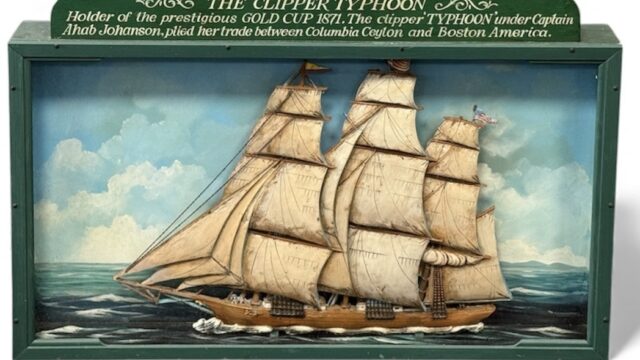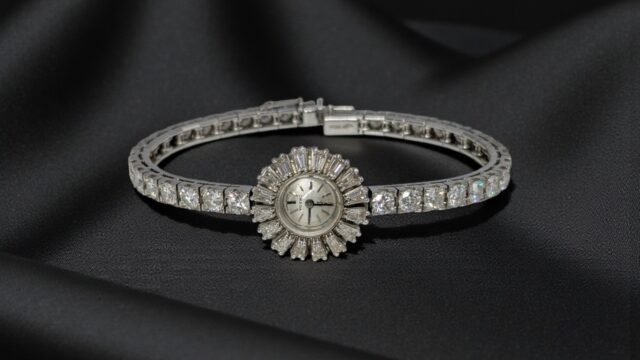Royal Worcester
The match-making science between auction room and collector has made the process so incredibly efficient. Collectors have little excuse for missing out on coveted lots these days.
Second guessing who is going to buy what at auction is always been a hazardous affair, but as we submerge deeper into the digital world, the destination of some items can come as a complete shock.
In our recent April Selections & Collections auction there were registered bidders from twenty-seven different countries. Recently we sold a typically Welsh antique to a Far-East buyer and conversely an expensive Chinese vase to a collector down the road in South Wales - this despite multiple bidding from Asia on the item.
And when it comes to painted Royal Worcester porcelain, you can almost guarantee a good degree of interest from…. Australia, of course!
The Australian market for ‘Worcester’ has been thriving for many years and even in the pre-internet era my father recalls an Australian gentleman who used to fly in to the UK, once or twice a year, to collect his Worcester purchases that he had won from various auction houses across the UK.
The Royal Worcester factory was established in 1751, nineteen years before Captain Cook landed. However, at the end of the Victorian period and in the first part of the 20th Century up to World War II, Royal Worcester enjoyed its golden age. It is items from this period that frequently make it to the Southern Hemisphere.
The Worcester factory employed a stable of the finest ceramic artists in this period, the artists were able to work on outstanding fine quality porcelain, in very often elaborate and complicated shapes.
Each of these artists in the Royal Worcester dream-team had a specialist subject matter or a range of subjects that they would expertly apply to their pieces, the quality of which was under strict control. Whether that be fruit or berries by Richard Sebright, Kitty Blake, Austin, Ayrton or Townsend. Or Cattle by the famous Stinton family, cottages by Rushton, birds by William Powell or by the sublimely talented Charles ‘Charlie’ Baldwyn.
Charles Henry Clifford Baldwyn (1843-1943) was a Royal Academy exhibited painter who began his career at Worcester in 1880 and left the workshop at the beginning of the century. His speciality was birds, particularly swans, often portraying them in flight under moonlight. Collectors all round the world lust after his work and the prices have not waned over the years.
The Stintons were a famous dynasty of Royal Worcester decorators; starting with Henry who worked at the Grainger’s Worcester factory at the start of the 19th Century, he was father to John who followed him into Grainger’s workshop, John then had John Junior and brothers Walter and James, each of them employed during the middle-part of the 19th Century. Then John Junior’s children Harry, Kate and Arthur came along and continued the family tradition at the turn of the century.
It is John (Junior) Stinton (1854-1956) who really stands out as being the most skilful of the clan. He ranks as one of the finest landscape porcelain painters of all time. He specialised in cattle and particularly Highland cattle. It was said that while decorating, his pipe never left his mouth. He shared a studio with his son Harry and brother James, and they would use oil of cloves as a medium for their paints. One cannot imagine the smelly concoction of pipe tobacco, cloves and paint!
Harry Davis (1885 – 1970) was another porcelain painter at Royal Worcester who is regarded as ‘the best’. He joined the factory in 1898 at the age of thirteen, rising to foreman and continuing until shortly before his death. The only time that Davis was not employed by the Royal Worcester factory was when he joined the army for the First World War. His speciality was sheep in Scottish mountains, woodlands or in gardens.
Kitty Blake (1905-1953) was another of Royal Worcester legends. Her speciality was autumnal studies of fallen blackberries, foliage and flowers. It was said that she was an animated character who always had a cigarette hanging from bright red lips.
Kitty Blake, Harry Davis, the Stinton family and Charles Baldwyn were just some of the Royal Worcester artists working during the ‘golden years’ of the factory. There were many more artists who came and went, in what was, a sizable operation.
There are collectors in Australia, the UK and around the world who will just collect Baldwyn, others who just collect fruit decorated pieces by various artist, and there are some collectors who go for the more obscure painters. The market remains buoyant and record prices at salerooms are still being achieved for rare or impressive pieces.
But why is there such a strong Australian following for Worcester?
I cannot answer with any assurance. But having looked at our archive many of the more important pieces we have sold have been to collectors down-under. Perhaps it could be a combination of reasons, but the theory I have is that the market just simply snowballed in Australia, from a small nucleus of collectors with an appetite for buying fuelled by bragging rights and the goal of refining their collections. As they bought better pieces, their lesser pieces entered the market in-Country and so the Australian Royal Worcester market became established.
But I would also like to think too, that perhaps the sunny nature of the decoration and the lovely bright gilding, suits the Australian environment and the Australian’s optimistic character.
But whatever the reasons, if you sell good Royal Worcester examples with us, invariably there will be some bidding from our antipodean cousins.
Our website archive shows hundreds of Royal Worcester lots sold over the years but below is a selection of recent items with the prices achieved, including Baldwyn, Davis, Stinton and Blake.
If you have Royal Worcester or other ceramics, you would like us to appraise by email without obligation please do contact us at:




























